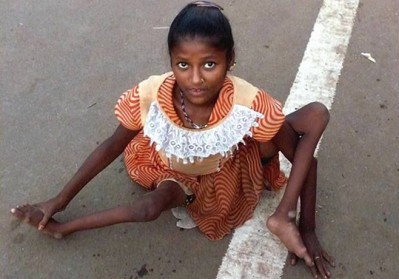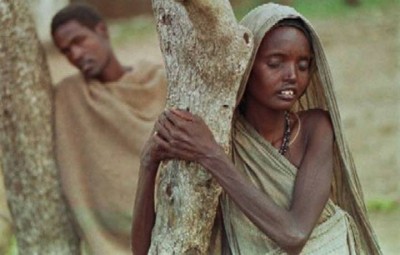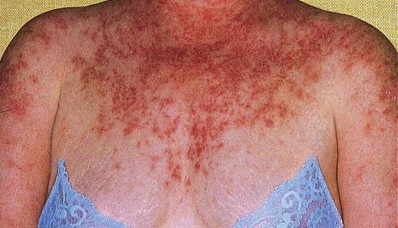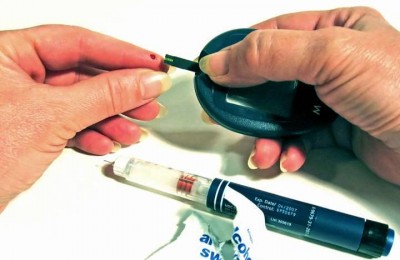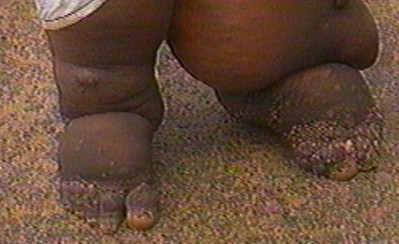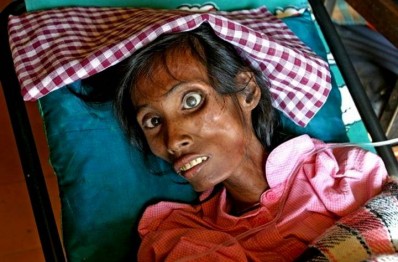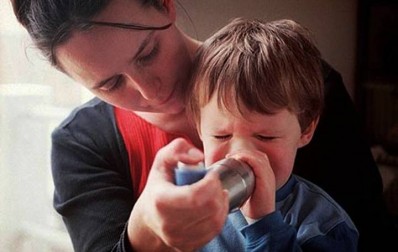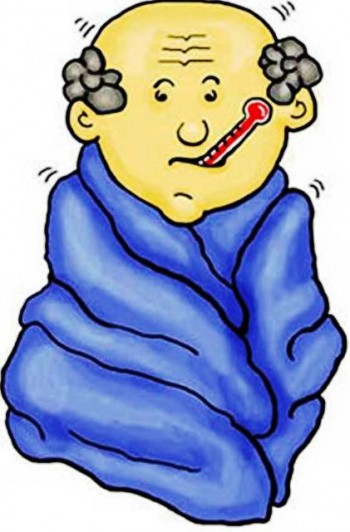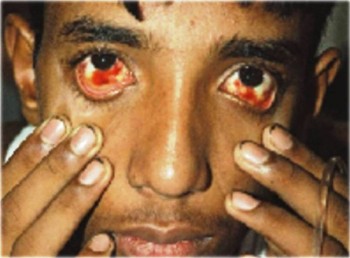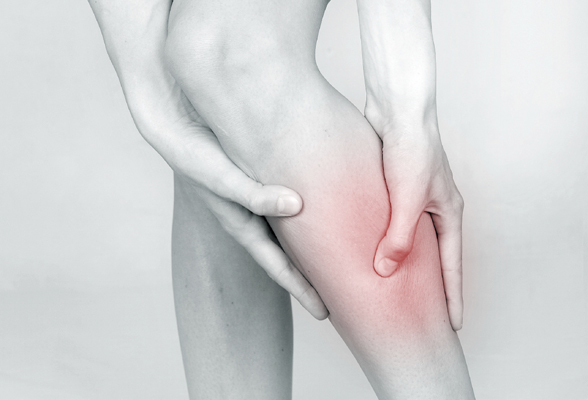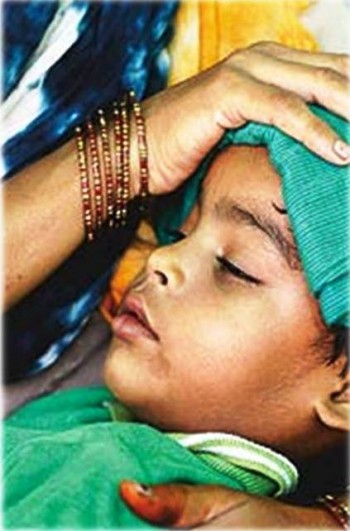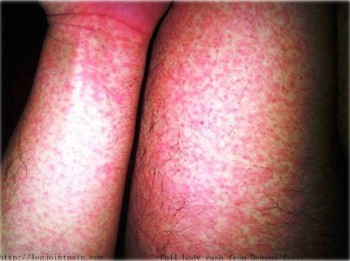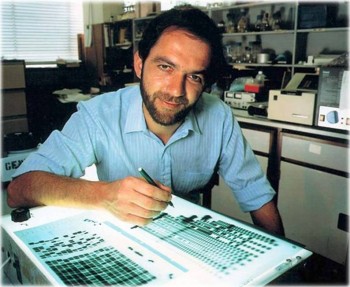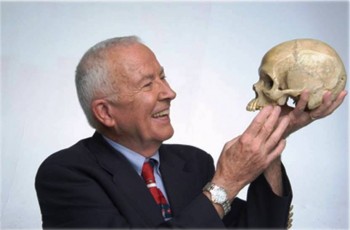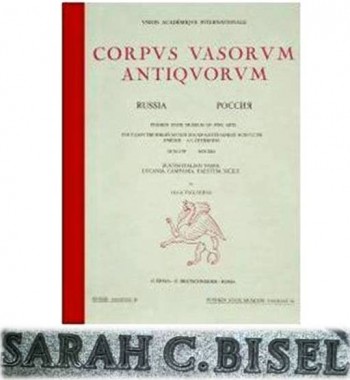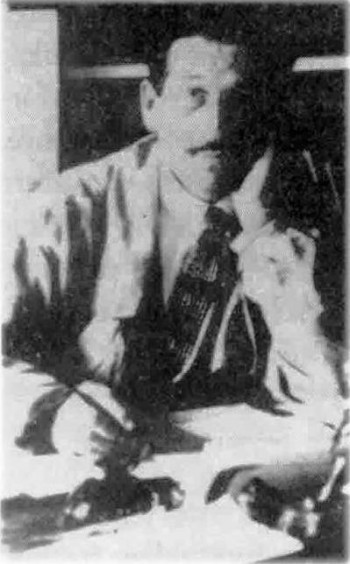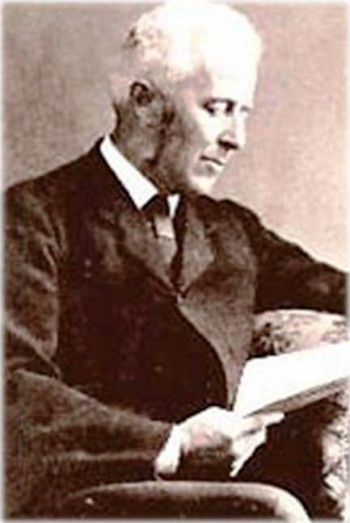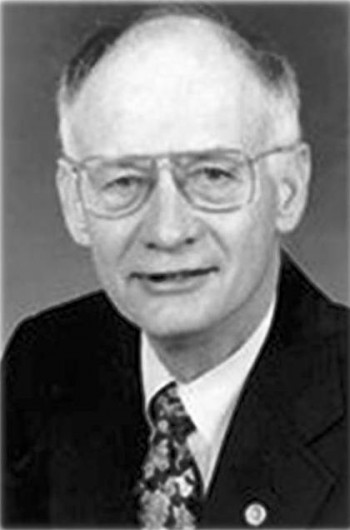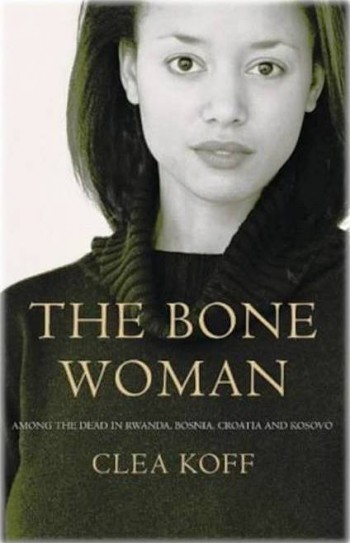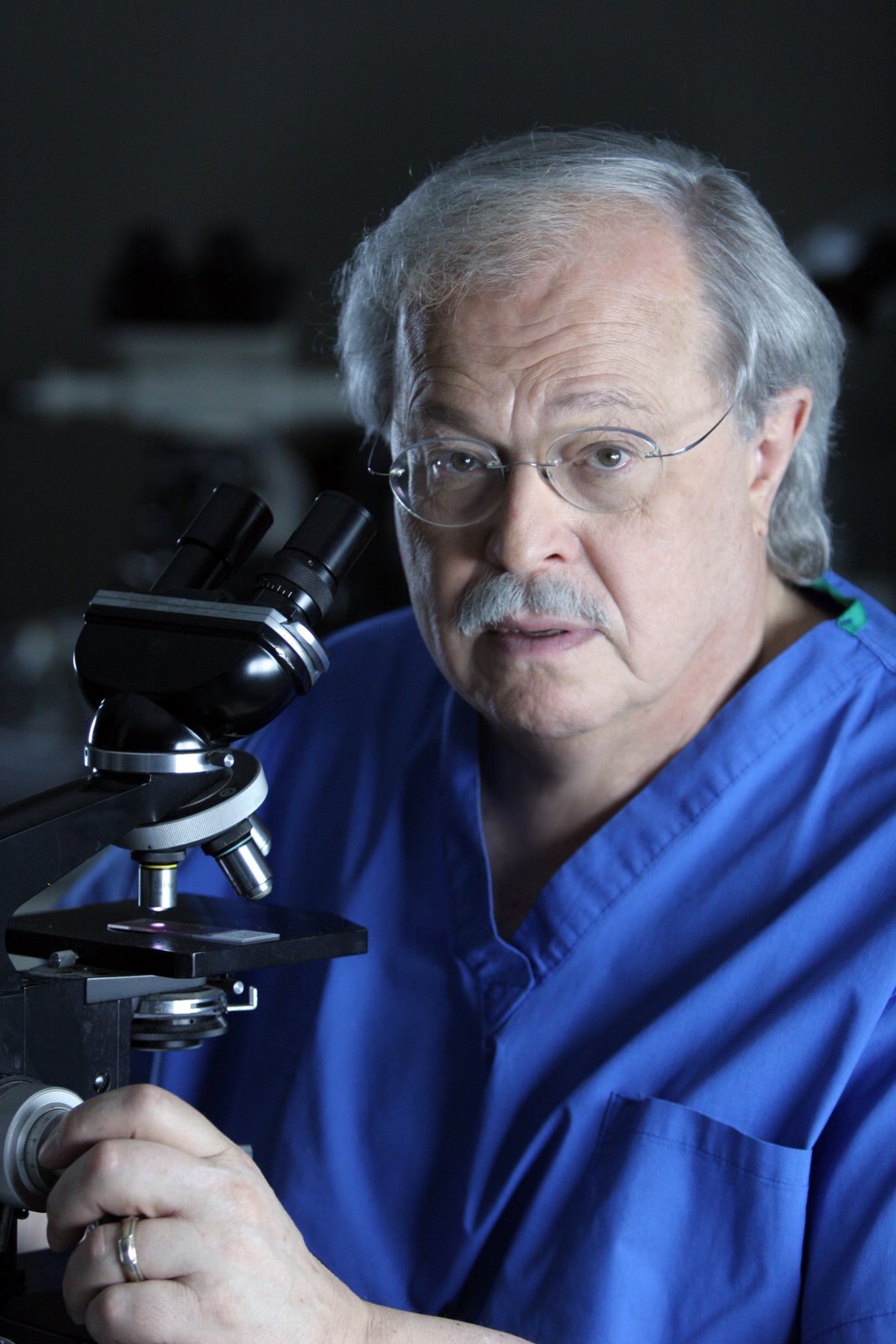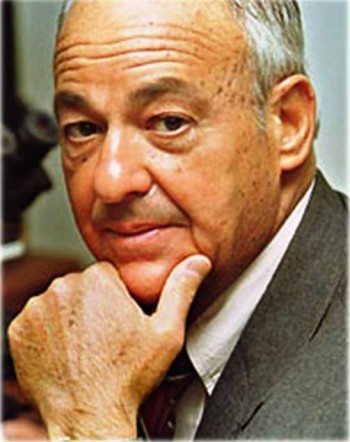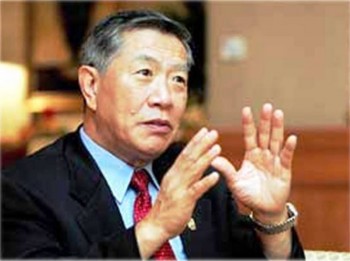2011
The prize was awarded jointly to
ELLEN JOHNSON SIRLEAF, LEYMAH GBOWEE and TAWAKKUL KARMAN for their non-violent struggle for the safety of women and for women's rights to full participation in peace-building work.
2010
The prize goes to:
LIU XIAOBO for his long and non-violent struggle for fundamental human rights in China.
2009
The prize goes to:
BARACK OBAMA for his extraordinary efforts to strengthen international diplomacy and cooperation between peoples.
2008
The prize goes to:
MARTTI AHTISAARI for his important efforts, on several continents and over more than three decades, to resolve international conflicts.
2007
The prize goes to:
INTERGOVERNMENTAL PANEL ON CLIMATE CHANGE (IPCC) and ALBERT ARNOLD ( AL) GORE JR. for their efforts to build up and disseminate greater knowledge about man-made climate change, and to lay the foundations for the measures that are needed to counteract such change.
2006
The prize goes to:
MUHAMMAD YUNUS and GRAMEEN BANK for their efforts to create economic and social development from below.
2005
The prize was awarded jointly to:
INTERNATIONAL ATOMIC ENERGY AGENCY and MOHAMED ELBARADEI for their efforts to prevent nuclear energy from being used for military purposes and to ensure that nuclear energy for peaceful purposes is used in the safest possible way.
2004
The prize was awarded to:
WANGARI MAATHAI
for her contribution to sustainable development, democracy and peace
2003
The prize was awarded to:
SHIRIN EBADI
for her efforts for democracy and human rights
2002
The prize was awarded to:
JIMMY CARTER JR., former President of the United States of America,
for his decades of untiring effort to find peaceful solutions to international conflicts, to advance democracy and human rights, and to promote economic and social development
2001
The prize was awarded to:
UNITED NATIONS, New York, NY, USA
KOFI ANNAN, United Nations Secretary General
2000
The prize was awarded to:
KIM DAE JUNG for his work for democracy and human rights in South Korea and in East Asia in general, and for peace and reconciliation with North Korea in particular.
1999
The prize was awarded to:
DOCTORS WITHOUT BORDERS (MÉDECINS SANS FRONTIÈRES), Brussels, Belgium.
1998
The prize was awarded jointly to:
JOHN HUME and DAVID TRIMBLE for their efforts to find a peaceful solution to the conflict in Northern Ireland.
1997
The prize was awarded jointly to:
INTERNATIONAL CAMPAIGN TO BAN LANDMINES (ICBL) and JODY WILLIAMS for their work for the banning and clearing of anti-personnel mines.
1996
The prize was awarded jointly to:
CARLOS FELIPE XIMENES BELO and JOSE RAMOS-HORTA for their work towards a just and peaceful solution to the conflict in East Timor.
1995
The prize was awarded jointly to:
JOSEPH ROTBLAT and to the PUGWASH CONFERENCES ON SCIENCE AND WORLD AFFAIRS for their efforts to diminish the part played by nuclear arms in international politics and in the longer run to eliminate such arms.
1994
The prize was awarded joinly to:
YASSER ARAFAT , Chairman of the Executive Committee of the PLO, President of the Palestinian National Authority.
SHIMON PERES , Foreign Minister of Israel.
YITZHAK RABIN , Prime Minister of Israel.
for their efforts to create peace in the Middle East.
1993
The prize was awarded jointly to:
NELSON MANDELA Leader of the ANC.
FREDRIK WILLEM DE KLERK President of the Republic of South Africa.
1992
RIGOBERTA MENCHU TUM, Guatemala. Campaigner for human rights, especially for indigenous peoples.
1991
AUNG SAN SUU KYI, Burma. Oppositional leader, human rights advocate.
1990
MIKHAIL SERGEYEVICH GORBACHEV , President of the USSR, helped to bring the Cold War to an end.
1989
THE 14TH DALAI LAMA (TENZIN GYATSO) , Tibet. Religious and political leader of the Tibetan people.
1988
THE UNITED NATIONS PEACE-KEEPING FORCES New York, NY, U.S.A.
1987
OSCAR ARIAS SANCHEZ , Costa Rica, President of Costa Rica, initiator of peace negotiations in Central America.
1986
ELIE WIESEL , U.S.A., Chairman of 'The President's Commission on the Holocaust'. Author, humanitarian.
1985
INTERNATIONAL PHYSICIANS FOR THE PREVENTION OF NUCLEAR WAR Boston, MA, U.S.A.
1984
DESMOND MPILO TUTU , South Africa, Bishop of Johannesburg, former Secretary General South African Council of Churches (S.A.C.C.). for his work against apartheid.
1983
LECH WALESA , Poland. Founder of Solidarity, campaigner for human rights.
1982
The prize was awarded jointly to:
ALVA MYRDAL , former Cabinet Minister, diplomat, delegate to United Nations General Assembly on Disarmament, writer.
ALFONSO GARCÍA ROBLES , diplomat, delegate to the United Nations General Assembly on Disarmament, former Secretary for Foreign Affairs .
1981
OFFICE OF THE UNITED NATIONS HIGH COMMISSIONER FOR REFUGEES Geneva, Switzerland.
1980
ADOLFO PEREZ ESQUIVEL , Argentina, architect, sculptor and human rights leader.
1979
MOTHER TERESA , India, Leader of the Order of the Missionaries of Charity.
1978
The prize was divided equally between:
MOHAMED ANWAR AL-SADAT , President of the Arab Republic of Egypt.
MENACHEM BEGIN , Prime Minister of Israel.
for jointly negotiating peace between Egypt and Israel.
1977
AMNESTY INTERNATIONAL London, Great Britain. A worldwide organization for the protection of the rights of prisoners of conscience.
1976
BETTY WILLIAMS and MAIREAD CORRIGAN Founders of the Northern Ireland Peace Movement (later renamed Community of Peace People).
1975
ANDREI DMITRIEVICH SAKHAROV , Soviet nuclear physicist. Campaigner for human rights.
1974
The prize was divided equally between:
SEÁN MAC BRIDE , President of the International Peace Bureau, Geneva, and the Commission of Namibia, United Nations, New York.
EISAKU SATO , Prime Minister of Japan.
1973
The prize was awarded jointly to:
HENRY A. KISSINGER , Secretary of State, State Department, Washington.
LE DUC THO , Democratic Republic of Viet Nam. (Declined the prize.)
for jointly negotiating the Vietnam peace accord in 1973.
1972
The prize money for 1972 was allocated to the Main Fund.
1971
WILLY BRANDT , Federal Republic of Germany, Chancellor of the Federal Republic of Germany, initiator of West Germany's Ostpolitik, embodying a new attitude towards Eastern Europe and East Germany.
1970
NORMAN BORLAUG , Led research at the International Maize and Wheat Improvement Center, Mexico City.
1969
INTERNATIONAL LABOUR ORGANIZATION (I.L.O.) Geneva.
1968
RENÉ CASSIN , President of the European Court for Human Rights .
1967-1966
The prize money was allocated to the Main Fund (1/3) and to the Special Fund (2/3) of this prize section.
1965
UNITED NATIONS CHILDREN'S FUND (UNICEF) New York, founded by U.N. in 1946. An international aid organization.
1964
MARTIN LUTHER KING JR. , leader of the Southern Christian Leadership Conference, campaigner for civil rights.
1963
The prize was divided equally between
COMITÉ INTERNATIONAL DE LA CROIX-ROUGE (INTERNATIONAL COMMITTEE OF THE REDCROSS) Geneva, founded 1863.
LIGUE DES SOCIÉTÉS DE LA CROIX-ROUGE (LEAGUE OF RED CROSS SOCIETIES) Geneva.
1962
LINUS CARL PAULING , California Institute of Technology, Pasadena, CA. Campaigner especially for an end to nuclear weapons tests.
1961
DAG HJALMAR AGNE CARL HAMMARSKJÖLD , Secretary General of the United Nations (awarded the Prize posthumously).
1960
ALBERT JOHN LUTULI , President of the South Africal liberation movement, the African National Congress.
1959
PHILIP J. NOEL-BAKER , Great Britain, Member of Parliament, life long ardent worker for international peace and co-operation .
1958
GEORGES HENRI PIRE , Belgium, Father of the Dominican Order, Leader of the relief organization for refugees, l'Europe du Coeur au Service du Monde.
1957
LESTER BOWLES PEARSON , former Secretary of State for External Affairs of Canada, President 7th Session of the United Nations General Assembly .
1956-1955
The prize money was allocated to the Main Fund (1/3) and to the Special Fund (2/3) of this prize section.
1954
OFFICE OF THE UNITED NATIONS HIGH COMMISSIONER FOR REFUGEES Geneva, an international relief organization, founded by U.N. in 1951.
1953
GEORGE CATLETT MARSHALL , General, President American Red Cross, ex-Secretary of State and of Defense, Delegate to the U.N., Originator of the Marshall Plan.
1952
ALBERT SCHWEITZER , Missionary surgeon, Founder Lambaréné Hospital in République du Gabon.
1951
LÉON JOUHAUX , France, President of the trade union C.G.T. Force Ouvrière. President of the International Committee of the European Council, Vice President of the International Confederation of Free Trade Unions, Vice President of the World Federation of Trade Unions, member of the ILO Council, delegate to the UN.
1950
RALPH BUNCHE , Professor Harvard University, Cambridge, MA, Director of the UN Division of Trusteeship, Acting Mediator in Palestine 1948.
1949
LORD JOHN BOYD ORR OF BRECHIN , Physician, Alimentary Politician, prominent organizer and Director General Food and Agricultural Organization, President National Peace Council and World Union of Peace Organizations.
1948
The prize money was allocated to the Main Fund (1/3) and to the Special Fund (2/3) of this prize section.
1947
The prize was awarded jointly to:
THE FRIENDS SERVICE COUNCIL (The Quakers), London. Founded in 1647.
THE AMERICAN FRIENDS SERVICE COMMITTEE (The Quakers), Washington. The society's first official meeting was held in 1672.
1946
The prize was divided equally between:
EMILY GREENE BALCH, former Professor of History and Sociology, Honorary International President Women's International League for Peace and Freedom.
JOHN RALEIGH MOTT Chairman of the first International Missionary Council, President of the World Alliance of Young Men's Christian Associations .
1945
CORDELL HULL Former Secretary of State. One of the initiators of the United Nations.
1944
COMITÉ INTERNATIONAL DE LA CROIX-ROUGE (INTERNATIONAL COMMITTEE OF THE RED CROSS)
1943-1939
The prize money was allocated to the Main Fund (1/3) and to the Special Fund (2/3) of this prize section.
1938
OFFICE INTERNATIONAL NANSEN POUR LES RÉFUGIÉS (NANSEN INTERNATIONAL OFFICE FOR REFUGEES) an international relief organization in Geneva started by Fridtjof Nansen in 1921.
1937
CECIL OF CHELWOOD, VISCOUNT, (LORD EDGAR ALGERNON ROBERT GASCOYNE CECIL) , Writer, Former Lord Privy Seal. Founder and President of the International Peace Campaign.
1936
CARLOS SAAVEDRA LAMAS Foreign Minister. President of the Société des Nations (League of Nations), Meditator in a conflict between Paraguay and Bolivia in 1935.
1935
CARL VON OSSIETZKY Journalist (with Die Weltbühne, among others), pacifist.
1934
ARTHUR HENDERSON Former Foreign Secretary. Chairman of the League of Nations Disarmament Conference 1932-1934.
1933
SIR NORMAN ANGELL (RALPH LANE) Writer. Member of the Commission Exécutive de la Société des Nations (Executive Committee of the League of Nations) and the National Peace Council. Author of the book The Great Illusion, among others.
1932
The prize money for 1932 was allocated to the Special Fund of this prize section.
1931
The prize was divided equally between:
JANE ADDAMS Sociologist. International President of the Women's International League for Peace and Freedom.
NICHOLAS MURRAY BUTLER President of Columbia University. Promoter of the Briand-Kellogg Pact.
1930
LARS OLOF NATHAN (JONATHAN) SÖDERBLOM Archbishop. Leader of the ecumenical movement.
1929
FRANK BILLINGS KELLOGG Former Secretary of State, Negotiated the Briand-Kellogg Pact.
1928
The prize money for 1928 was allocated to the Special Fund of this prize section.
1927
The prize was divided equally between:
FERDINAND BUISSON Former Professor at the Sorbonne University, Paris. Founder and President of the Ligue des Droits de l'Homme (League for Human Rights).
LUDWIG QUIDDE Historian. Professor at Berlin University. Member of Germany's constituent assembly 1919. Delegate to numerous peace conferences.
1926
The prize was awarded jointly to:
ARISTIDE BRIAND Foreign Minister. Negotiator of the Locarno Treaty and the Briand-Kellogg Pact.
GUSTAV STRESEMANN Former Lord High Chancellor (Reichs-kanzler). Foreign Minister. Negotiator of the Locarno Treaty.
1925
The prize was awarded jointly to:
SIR AUSTEN CHAMBERLAIN Foreign Minister. Negotiator of the Locarno Treaty.
CHARLES GATES DAWES Vice-President of the United States of America. Chairman of the Allied Reparation Commission. Originator of the Dawes Plan .
1924-1923
The prize money for 1924-1923 was allocated to the Special Fund of this prize section.
1922
FRIDTJOF NANSEN , Norway. Scientist. Explorer. Norwegian Delegate to Société des Nations (League of Nations). Originator of the Nansen passports (for refugees).
1921
The prize was divided equally between:
KARL HJALMAR BRANTING Prime Minister. Swedish Delegate to the Conseil de la Société des Nations (Council of the League of Nations).
CHRISTIAN LOUS LANGE Secretary General of the Inter-Parliamentary Union, Brussels.
1920
LÉON VICTOR AUGUSTE BOURGEOIS, France. Former Secretary of State. President of the Parliament (Sénat). President of the Conseil de la Société des Nations (Council of the League of Nations) .
1919
THOMAS WOODROW WILSON, President of the United States of America. Founder of the Société des Nations (League of Nations)
1918
The prize money for 1918 was allocated to the Special Fund of this prize section.
1917
COMITÉ INTERNATIONAL DE LA CROIX ROUGE (INTERNATIONAL COMMITTEE OF THE REDCROSS) , Geneva.
1916-1914
The prize money for 1916-1914 was allocated to the Special Fund of this prize section.
1913
HENRI LA FONTAINE, Belgium. Member of the Belgian Parliament (Sénateur). President of the Permanent International Peace Bureau, Berne.
1912
ELIHU ROOT Former Secretary of State. Initiator of several arbitration agreements.
1911
The prize was divided equally between:
TOBIAS MICHAEL CAREL ASSER, the Netherlands. Cabinet Minister. Member of the Privy Council. Initiator of the International Conferences of Private Law at the Hague.
ALFRED HERMANN FRIED, Austria. Journalist. Founder of the peace journal Die Waffen Nieder (later renamed Die Friedenswarte).
1910
BUREAU INTERNATIONAL PERMANENT DE LA PAIX (PERMANENT INTERNATIONAL PEACE BUREAU) , Bern.
1909
The prize was divided equally between:
AUGUSTE MARIE FRANÇOIS BEERNAERT, Belgium. Former Prime Minister. Member of the Belgian Parliament. Member of the Cour Internationale d'Arbitrage (International Court of Arbitration) at the Hague.
PAUL HENRIBENJAMIN BALLUET D'ESTOURNELLES DE CONSTANT, BARON DE CONSTANT DE REBECQUE, France. Member of the French Parliament (Sénateur). Founder and President of the French parliamentary group for international arbitration (Groupe parlementaire de l'arbitrage international). Founder of the Comité de défense des intérêtsnationaux et de conciliation internationale (Committee for the Defense of National Interests and International Conciliation).
1908
The prize was divided equally between:
KLAS PONTUS ARNOLDSON, Sweden. Writer. Former Member fo the Swedish Parliament. Founder of the Swedish Peace and Arbitration League.
FREDRIK BAJER, Denmark. Member of the Danish Parliament. Honorary President of the Permanent International Peace Bureau, Berne.
1907
The prize was divided equally between:
ERNESTO TEODORO MONETA, Italy. President of the Lombard League of Peace.
LOUIS RENAULT, France. Professor International Law, Sorbonne University, Paris.
1906
THEODORE ROOSEVELT, USA. President of the United States of America. Drew up the 1905 peace treaty between Russia and Japan.
1905
BARONESS BERTHA SOPHIE FELICITA VON SUTTNER née COUNTESS KINSKY von CHINIC und TETTAU, Austria. Writer. Hon. President of the Permanent International Peace Bureau, Berne. Author of Die Waffen Nieder (Lay Down Your Arms).
1904
INSTITUT DE DROIT INTERNATIONAL (INSTITUTE OF INTERNATIONAL LAW) , Gent, Belgium. A scientific society.
1903
SIR WILLIAM RANDAL CREMER, Great Britain. Member of the British Parliament. Secretary of the International Arbitration League .
1902
The prize was divided equally between:
ÉLIE DUCOMMUN, Switzerland. Honorary Secretary of the Permanent International Peace Bureau, Berne.
CHARLES ALBERT GOBAT, Switzerland. Secretary General of the Inter-Parliamentary Union, Berne. Honorary Secretary of the Permanent International Peace Bureau, Berne.
1901
The prize was divided equally between:
JEAN HENRI DUNANT, Switzerland. Founder of the International Committee of the Red Cross, Geneva; Initiator of the Geneva Convention (Convention de Genève).
FRÉDÉRIC PASSY, France. Founder and President of the first French peace society (since 1889 it has been called the Société Francaise pour l'arbitrage entre nations).
The prize was awarded jointly to
ELLEN JOHNSON SIRLEAF, LEYMAH GBOWEE and TAWAKKUL KARMAN for their non-violent struggle for the safety of women and for women's rights to full participation in peace-building work.
2010
The prize goes to:
LIU XIAOBO for his long and non-violent struggle for fundamental human rights in China.
2009
The prize goes to:
BARACK OBAMA for his extraordinary efforts to strengthen international diplomacy and cooperation between peoples.
2008
The prize goes to:
MARTTI AHTISAARI for his important efforts, on several continents and over more than three decades, to resolve international conflicts.
2007
The prize goes to:
INTERGOVERNMENTAL PANEL ON CLIMATE CHANGE (IPCC) and ALBERT ARNOLD ( AL) GORE JR. for their efforts to build up and disseminate greater knowledge about man-made climate change, and to lay the foundations for the measures that are needed to counteract such change.
2006
The prize goes to:
MUHAMMAD YUNUS and GRAMEEN BANK for their efforts to create economic and social development from below.
2005
The prize was awarded jointly to:
INTERNATIONAL ATOMIC ENERGY AGENCY and MOHAMED ELBARADEI for their efforts to prevent nuclear energy from being used for military purposes and to ensure that nuclear energy for peaceful purposes is used in the safest possible way.
2004
The prize was awarded to:
WANGARI MAATHAI
for her contribution to sustainable development, democracy and peace
2003
The prize was awarded to:
SHIRIN EBADI
for her efforts for democracy and human rights
2002
The prize was awarded to:
JIMMY CARTER JR., former President of the United States of America,
for his decades of untiring effort to find peaceful solutions to international conflicts, to advance democracy and human rights, and to promote economic and social development
2001
The prize was awarded to:
UNITED NATIONS, New York, NY, USA
KOFI ANNAN, United Nations Secretary General
2000
The prize was awarded to:
KIM DAE JUNG for his work for democracy and human rights in South Korea and in East Asia in general, and for peace and reconciliation with North Korea in particular.
1999
The prize was awarded to:
DOCTORS WITHOUT BORDERS (MÉDECINS SANS FRONTIÈRES), Brussels, Belgium.
1998
The prize was awarded jointly to:
JOHN HUME and DAVID TRIMBLE for their efforts to find a peaceful solution to the conflict in Northern Ireland.
1997
The prize was awarded jointly to:
INTERNATIONAL CAMPAIGN TO BAN LANDMINES (ICBL) and JODY WILLIAMS for their work for the banning and clearing of anti-personnel mines.
1996
The prize was awarded jointly to:
CARLOS FELIPE XIMENES BELO and JOSE RAMOS-HORTA for their work towards a just and peaceful solution to the conflict in East Timor.
1995
The prize was awarded jointly to:
JOSEPH ROTBLAT and to the PUGWASH CONFERENCES ON SCIENCE AND WORLD AFFAIRS for their efforts to diminish the part played by nuclear arms in international politics and in the longer run to eliminate such arms.
1994
The prize was awarded joinly to:
YASSER ARAFAT , Chairman of the Executive Committee of the PLO, President of the Palestinian National Authority.
SHIMON PERES , Foreign Minister of Israel.
YITZHAK RABIN , Prime Minister of Israel.
for their efforts to create peace in the Middle East.
1993
The prize was awarded jointly to:
NELSON MANDELA Leader of the ANC.
FREDRIK WILLEM DE KLERK President of the Republic of South Africa.
1992
RIGOBERTA MENCHU TUM, Guatemala. Campaigner for human rights, especially for indigenous peoples.
1991
AUNG SAN SUU KYI, Burma. Oppositional leader, human rights advocate.
1990
MIKHAIL SERGEYEVICH GORBACHEV , President of the USSR, helped to bring the Cold War to an end.
1989
THE 14TH DALAI LAMA (TENZIN GYATSO) , Tibet. Religious and political leader of the Tibetan people.
1988
THE UNITED NATIONS PEACE-KEEPING FORCES New York, NY, U.S.A.
1987
OSCAR ARIAS SANCHEZ , Costa Rica, President of Costa Rica, initiator of peace negotiations in Central America.
1986
ELIE WIESEL , U.S.A., Chairman of 'The President's Commission on the Holocaust'. Author, humanitarian.
1985
INTERNATIONAL PHYSICIANS FOR THE PREVENTION OF NUCLEAR WAR Boston, MA, U.S.A.
1984
DESMOND MPILO TUTU , South Africa, Bishop of Johannesburg, former Secretary General South African Council of Churches (S.A.C.C.). for his work against apartheid.
1983
LECH WALESA , Poland. Founder of Solidarity, campaigner for human rights.
1982
The prize was awarded jointly to:
ALVA MYRDAL , former Cabinet Minister, diplomat, delegate to United Nations General Assembly on Disarmament, writer.
ALFONSO GARCÍA ROBLES , diplomat, delegate to the United Nations General Assembly on Disarmament, former Secretary for Foreign Affairs .
1981
OFFICE OF THE UNITED NATIONS HIGH COMMISSIONER FOR REFUGEES Geneva, Switzerland.
1980
ADOLFO PEREZ ESQUIVEL , Argentina, architect, sculptor and human rights leader.
1979
MOTHER TERESA , India, Leader of the Order of the Missionaries of Charity.
1978
The prize was divided equally between:
MOHAMED ANWAR AL-SADAT , President of the Arab Republic of Egypt.
MENACHEM BEGIN , Prime Minister of Israel.
for jointly negotiating peace between Egypt and Israel.
1977
AMNESTY INTERNATIONAL London, Great Britain. A worldwide organization for the protection of the rights of prisoners of conscience.
1976
BETTY WILLIAMS and MAIREAD CORRIGAN Founders of the Northern Ireland Peace Movement (later renamed Community of Peace People).
1975
ANDREI DMITRIEVICH SAKHAROV , Soviet nuclear physicist. Campaigner for human rights.
1974
The prize was divided equally between:
SEÁN MAC BRIDE , President of the International Peace Bureau, Geneva, and the Commission of Namibia, United Nations, New York.
EISAKU SATO , Prime Minister of Japan.
1973
The prize was awarded jointly to:
HENRY A. KISSINGER , Secretary of State, State Department, Washington.
LE DUC THO , Democratic Republic of Viet Nam. (Declined the prize.)
for jointly negotiating the Vietnam peace accord in 1973.
1972
The prize money for 1972 was allocated to the Main Fund.
1971
WILLY BRANDT , Federal Republic of Germany, Chancellor of the Federal Republic of Germany, initiator of West Germany's Ostpolitik, embodying a new attitude towards Eastern Europe and East Germany.
1970
NORMAN BORLAUG , Led research at the International Maize and Wheat Improvement Center, Mexico City.
1969
INTERNATIONAL LABOUR ORGANIZATION (I.L.O.) Geneva.
1968
RENÉ CASSIN , President of the European Court for Human Rights .
1967-1966
The prize money was allocated to the Main Fund (1/3) and to the Special Fund (2/3) of this prize section.
1965
UNITED NATIONS CHILDREN'S FUND (UNICEF) New York, founded by U.N. in 1946. An international aid organization.
1964
MARTIN LUTHER KING JR. , leader of the Southern Christian Leadership Conference, campaigner for civil rights.
1963
The prize was divided equally between
COMITÉ INTERNATIONAL DE LA CROIX-ROUGE (INTERNATIONAL COMMITTEE OF THE REDCROSS) Geneva, founded 1863.
LIGUE DES SOCIÉTÉS DE LA CROIX-ROUGE (LEAGUE OF RED CROSS SOCIETIES) Geneva.
1962
LINUS CARL PAULING , California Institute of Technology, Pasadena, CA. Campaigner especially for an end to nuclear weapons tests.
1961
DAG HJALMAR AGNE CARL HAMMARSKJÖLD , Secretary General of the United Nations (awarded the Prize posthumously).
1960
ALBERT JOHN LUTULI , President of the South Africal liberation movement, the African National Congress.
1959
PHILIP J. NOEL-BAKER , Great Britain, Member of Parliament, life long ardent worker for international peace and co-operation .
1958
GEORGES HENRI PIRE , Belgium, Father of the Dominican Order, Leader of the relief organization for refugees, l'Europe du Coeur au Service du Monde.
1957
LESTER BOWLES PEARSON , former Secretary of State for External Affairs of Canada, President 7th Session of the United Nations General Assembly .
1956-1955
The prize money was allocated to the Main Fund (1/3) and to the Special Fund (2/3) of this prize section.
1954
OFFICE OF THE UNITED NATIONS HIGH COMMISSIONER FOR REFUGEES Geneva, an international relief organization, founded by U.N. in 1951.
1953
GEORGE CATLETT MARSHALL , General, President American Red Cross, ex-Secretary of State and of Defense, Delegate to the U.N., Originator of the Marshall Plan.
1952
ALBERT SCHWEITZER , Missionary surgeon, Founder Lambaréné Hospital in République du Gabon.
1951
LÉON JOUHAUX , France, President of the trade union C.G.T. Force Ouvrière. President of the International Committee of the European Council, Vice President of the International Confederation of Free Trade Unions, Vice President of the World Federation of Trade Unions, member of the ILO Council, delegate to the UN.
1950
RALPH BUNCHE , Professor Harvard University, Cambridge, MA, Director of the UN Division of Trusteeship, Acting Mediator in Palestine 1948.
1949
LORD JOHN BOYD ORR OF BRECHIN , Physician, Alimentary Politician, prominent organizer and Director General Food and Agricultural Organization, President National Peace Council and World Union of Peace Organizations.
1948
The prize money was allocated to the Main Fund (1/3) and to the Special Fund (2/3) of this prize section.
1947
The prize was awarded jointly to:
THE FRIENDS SERVICE COUNCIL (The Quakers), London. Founded in 1647.
THE AMERICAN FRIENDS SERVICE COMMITTEE (The Quakers), Washington. The society's first official meeting was held in 1672.
1946
The prize was divided equally between:
EMILY GREENE BALCH, former Professor of History and Sociology, Honorary International President Women's International League for Peace and Freedom.
JOHN RALEIGH MOTT Chairman of the first International Missionary Council, President of the World Alliance of Young Men's Christian Associations .
1945
CORDELL HULL Former Secretary of State. One of the initiators of the United Nations.
1944
COMITÉ INTERNATIONAL DE LA CROIX-ROUGE (INTERNATIONAL COMMITTEE OF THE RED CROSS)
1943-1939
The prize money was allocated to the Main Fund (1/3) and to the Special Fund (2/3) of this prize section.
1938
OFFICE INTERNATIONAL NANSEN POUR LES RÉFUGIÉS (NANSEN INTERNATIONAL OFFICE FOR REFUGEES) an international relief organization in Geneva started by Fridtjof Nansen in 1921.
1937
CECIL OF CHELWOOD, VISCOUNT, (LORD EDGAR ALGERNON ROBERT GASCOYNE CECIL) , Writer, Former Lord Privy Seal. Founder and President of the International Peace Campaign.
1936
CARLOS SAAVEDRA LAMAS Foreign Minister. President of the Société des Nations (League of Nations), Meditator in a conflict between Paraguay and Bolivia in 1935.
1935
CARL VON OSSIETZKY Journalist (with Die Weltbühne, among others), pacifist.
1934
ARTHUR HENDERSON Former Foreign Secretary. Chairman of the League of Nations Disarmament Conference 1932-1934.
1933
SIR NORMAN ANGELL (RALPH LANE) Writer. Member of the Commission Exécutive de la Société des Nations (Executive Committee of the League of Nations) and the National Peace Council. Author of the book The Great Illusion, among others.
1932
The prize money for 1932 was allocated to the Special Fund of this prize section.
1931
The prize was divided equally between:
JANE ADDAMS Sociologist. International President of the Women's International League for Peace and Freedom.
NICHOLAS MURRAY BUTLER President of Columbia University. Promoter of the Briand-Kellogg Pact.
1930
LARS OLOF NATHAN (JONATHAN) SÖDERBLOM Archbishop. Leader of the ecumenical movement.
1929
FRANK BILLINGS KELLOGG Former Secretary of State, Negotiated the Briand-Kellogg Pact.
1928
The prize money for 1928 was allocated to the Special Fund of this prize section.
1927
The prize was divided equally between:
FERDINAND BUISSON Former Professor at the Sorbonne University, Paris. Founder and President of the Ligue des Droits de l'Homme (League for Human Rights).
LUDWIG QUIDDE Historian. Professor at Berlin University. Member of Germany's constituent assembly 1919. Delegate to numerous peace conferences.
1926
The prize was awarded jointly to:
ARISTIDE BRIAND Foreign Minister. Negotiator of the Locarno Treaty and the Briand-Kellogg Pact.
GUSTAV STRESEMANN Former Lord High Chancellor (Reichs-kanzler). Foreign Minister. Negotiator of the Locarno Treaty.
1925
The prize was awarded jointly to:
SIR AUSTEN CHAMBERLAIN Foreign Minister. Negotiator of the Locarno Treaty.
CHARLES GATES DAWES Vice-President of the United States of America. Chairman of the Allied Reparation Commission. Originator of the Dawes Plan .
1924-1923
The prize money for 1924-1923 was allocated to the Special Fund of this prize section.
1922
FRIDTJOF NANSEN , Norway. Scientist. Explorer. Norwegian Delegate to Société des Nations (League of Nations). Originator of the Nansen passports (for refugees).
1921
The prize was divided equally between:
KARL HJALMAR BRANTING Prime Minister. Swedish Delegate to the Conseil de la Société des Nations (Council of the League of Nations).
CHRISTIAN LOUS LANGE Secretary General of the Inter-Parliamentary Union, Brussels.
1920
LÉON VICTOR AUGUSTE BOURGEOIS, France. Former Secretary of State. President of the Parliament (Sénat). President of the Conseil de la Société des Nations (Council of the League of Nations) .
1919
THOMAS WOODROW WILSON, President of the United States of America. Founder of the Société des Nations (League of Nations)
1918
The prize money for 1918 was allocated to the Special Fund of this prize section.
1917
COMITÉ INTERNATIONAL DE LA CROIX ROUGE (INTERNATIONAL COMMITTEE OF THE REDCROSS) , Geneva.
1916-1914
The prize money for 1916-1914 was allocated to the Special Fund of this prize section.
1913
HENRI LA FONTAINE, Belgium. Member of the Belgian Parliament (Sénateur). President of the Permanent International Peace Bureau, Berne.
1912
ELIHU ROOT Former Secretary of State. Initiator of several arbitration agreements.
1911
The prize was divided equally between:
TOBIAS MICHAEL CAREL ASSER, the Netherlands. Cabinet Minister. Member of the Privy Council. Initiator of the International Conferences of Private Law at the Hague.
ALFRED HERMANN FRIED, Austria. Journalist. Founder of the peace journal Die Waffen Nieder (later renamed Die Friedenswarte).
1910
BUREAU INTERNATIONAL PERMANENT DE LA PAIX (PERMANENT INTERNATIONAL PEACE BUREAU) , Bern.
1909
The prize was divided equally between:
AUGUSTE MARIE FRANÇOIS BEERNAERT, Belgium. Former Prime Minister. Member of the Belgian Parliament. Member of the Cour Internationale d'Arbitrage (International Court of Arbitration) at the Hague.
PAUL HENRIBENJAMIN BALLUET D'ESTOURNELLES DE CONSTANT, BARON DE CONSTANT DE REBECQUE, France. Member of the French Parliament (Sénateur). Founder and President of the French parliamentary group for international arbitration (Groupe parlementaire de l'arbitrage international). Founder of the Comité de défense des intérêtsnationaux et de conciliation internationale (Committee for the Defense of National Interests and International Conciliation).
1908
The prize was divided equally between:
KLAS PONTUS ARNOLDSON, Sweden. Writer. Former Member fo the Swedish Parliament. Founder of the Swedish Peace and Arbitration League.
FREDRIK BAJER, Denmark. Member of the Danish Parliament. Honorary President of the Permanent International Peace Bureau, Berne.
1907
The prize was divided equally between:
ERNESTO TEODORO MONETA, Italy. President of the Lombard League of Peace.
LOUIS RENAULT, France. Professor International Law, Sorbonne University, Paris.
1906
THEODORE ROOSEVELT, USA. President of the United States of America. Drew up the 1905 peace treaty between Russia and Japan.
1905
BARONESS BERTHA SOPHIE FELICITA VON SUTTNER née COUNTESS KINSKY von CHINIC und TETTAU, Austria. Writer. Hon. President of the Permanent International Peace Bureau, Berne. Author of Die Waffen Nieder (Lay Down Your Arms).
1904
INSTITUT DE DROIT INTERNATIONAL (INSTITUTE OF INTERNATIONAL LAW) , Gent, Belgium. A scientific society.
1903
SIR WILLIAM RANDAL CREMER, Great Britain. Member of the British Parliament. Secretary of the International Arbitration League .
1902
The prize was divided equally between:
ÉLIE DUCOMMUN, Switzerland. Honorary Secretary of the Permanent International Peace Bureau, Berne.
CHARLES ALBERT GOBAT, Switzerland. Secretary General of the Inter-Parliamentary Union, Berne. Honorary Secretary of the Permanent International Peace Bureau, Berne.
1901
The prize was divided equally between:
JEAN HENRI DUNANT, Switzerland. Founder of the International Committee of the Red Cross, Geneva; Initiator of the Geneva Convention (Convention de Genève).
FRÉDÉRIC PASSY, France. Founder and President of the first French peace society (since 1889 it has been called the Société Francaise pour l'arbitrage entre nations).




























